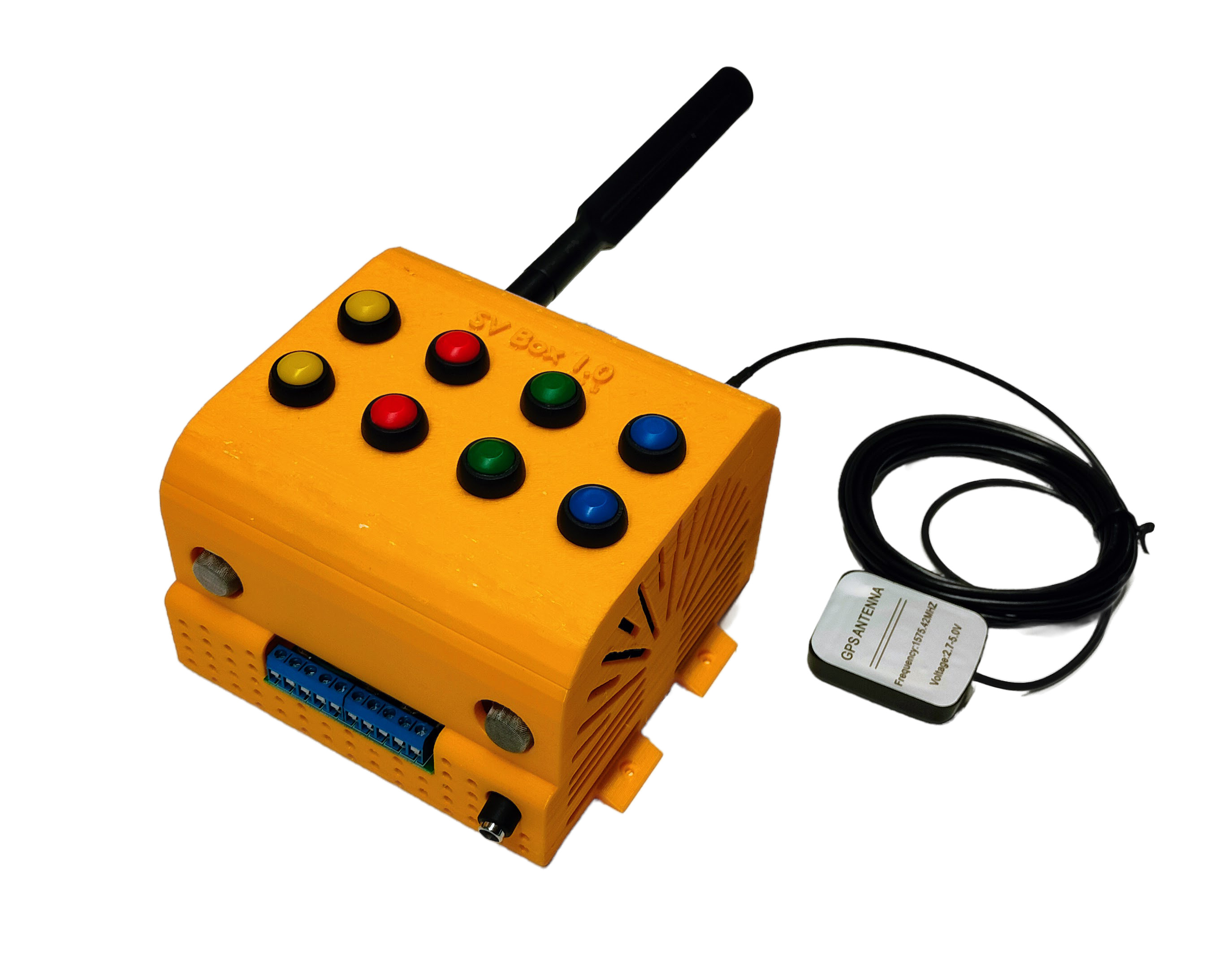Hardware - SVBox IoT 1.0
This model of the Smart Van Box is designed to be used daily within your own vehicles.
This model can provide mobile internet connectivity through the 4G module environmental monitoring with sensors, and the ability to connect up to 4 camper's services with as many physical buttons.
Furthermore, this prototype is equipped with a GNSS module and a buffer battery for IoT components. This way, your van will stay connected even when the vehicle batteries are completely discharged or not plugged.
Follow instructions below to build your own .Build your Smart Van Box
Explore the documentation of this prototype to get an idea of how to adapt it to your needs.
-
Prepare all the necessary materials
Check the SV Box BOM List and ensure you have everything needed to start. Within the list, you can find links to e-commerce sites where you can purchase all the necessary components. Additionally, in the Hardware Requirements section, you can also find a list of necessary tools, such as a 3D printer. -
Assemble your own Smart Van Box
We have divided the assembly process into 3 phases: -
Mount the SmartVanBox on board
Follow the mounting guides for your SmartVanBox, then let's download and install the SmartVan Mobile App on your phone.
And enjoy your SmartVan experience!
Model's resources
The SVBox IoT's an IoT device based on Raspberry Pi that, with JOD Smart Van, enables monitoring and controlling all services/systems connected to the Raspberry Pi and, consequently, the Smart Van Box.
Within this device, various sensors are integrated, such as environmental sensors, gas detection sensors, but also GPS and GSM modules. Additionally, the block houses a buffer battery (UPS) that provides power to the IoT component even when the service battery is disconnected or depleted.
Internally, the SmartVanBox contains a Raspberry Pi 4 within a stack of HAT (in order: UPS Pack, Raspberry Pi, SIM7600 and Sense Hat). Other modules are hosted on the internal panels (the IO Exp and the Relays modules). Then, also the two gas sensors are placed on their own supports.
Other devices can be integrated using available USB ports or wireless using the WiFi / Bluetooth connections (see Victron BlueSolar and SmartSolar).
